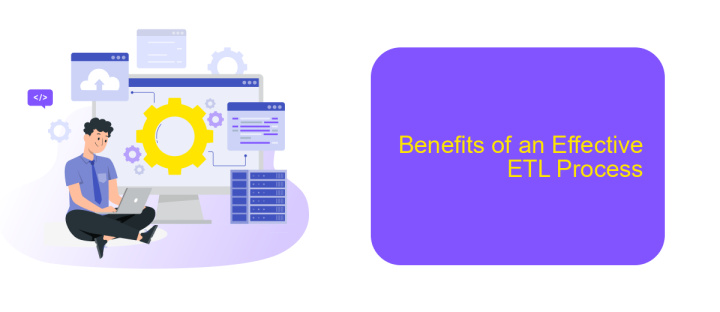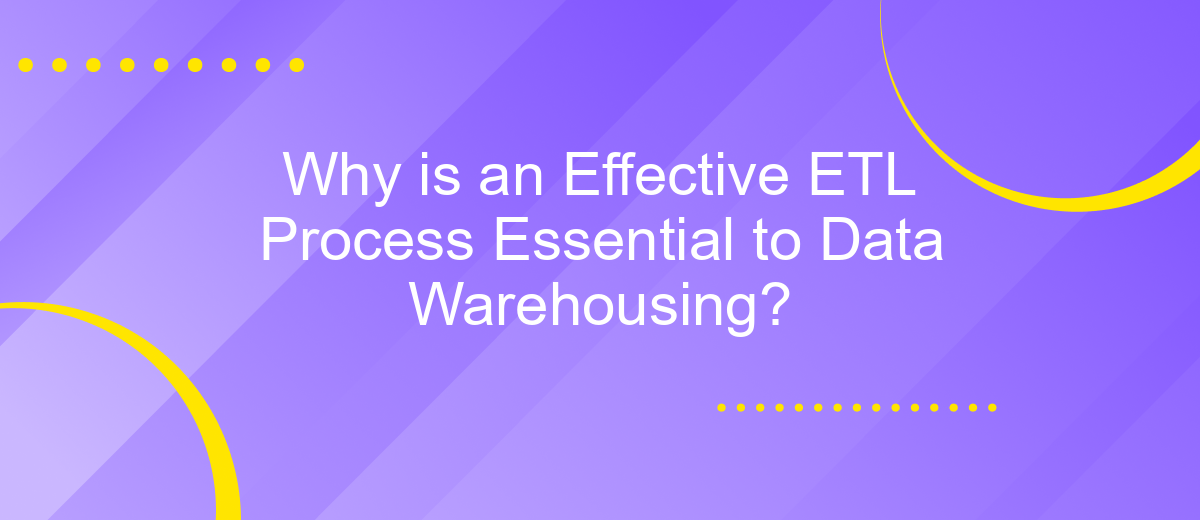Why is an Effective ETL Process Essential to Data Warehousing?
In the digital age, data is a critical asset for any organization, driving decision-making and strategic planning. An effective Extract, Transform, Load (ETL) process is essential to data warehousing as it ensures the accurate, timely, and efficient consolidation of data from various sources. This foundational step guarantees data integrity, enhances analytical capabilities, and supports informed business decisions.
Introduction
In today's data-driven world, the importance of an efficient ETL (Extract, Transform, Load) process in data warehousing cannot be overstated. ETL is crucial for integrating diverse data sources and ensuring that the data is accurate, timely, and useful for decision-making. A well-designed ETL process can significantly enhance the quality and accessibility of data, which is vital for any organization aiming to leverage data for strategic advantage.
- Data Integration: Combining data from various sources into a unified view.
- Data Transformation: Converting data into a usable format.
- Data Loading: Inserting transformed data into the data warehouse.
By automating and optimizing these steps, services like ApiX-Drive can streamline the ETL process, reducing manual effort and minimizing errors. ApiX-Drive offers robust integration capabilities, allowing businesses to connect multiple data sources effortlessly. This ensures that data is always up-to-date and ready for analysis, ultimately empowering organizations to make informed decisions faster and more efficiently.
Understanding Data Warehousing

Data warehousing is a critical component of modern data management strategies, providing a centralized repository for storing, managing, and analyzing large volumes of data. It enables organizations to consolidate data from various sources, ensuring consistency and accuracy. This centralized approach facilitates efficient data retrieval and reporting, empowering decision-makers with timely and relevant insights. By integrating data from disparate systems, data warehousing supports comprehensive analysis and informed decision-making.
Effective data warehousing requires robust ETL (Extract, Transform, Load) processes to ensure data quality and integrity. Tools like ApiX-Drive can streamline the integration of multiple data sources, automating the extraction and transformation processes. This not only reduces manual effort but also minimizes errors, ensuring that data is accurate and up-to-date. With ApiX-Drive, organizations can seamlessly connect various applications and databases, enabling a smooth and efficient flow of data into the data warehouse. This integration capability is essential for maintaining a reliable and scalable data warehousing solution.
The Role of ETL in Data Warehousing

The Extract, Transform, Load (ETL) process plays a crucial role in data warehousing by ensuring that data from various sources is accurately and efficiently consolidated into a single repository. This process enables organizations to make informed decisions based on comprehensive and consistent data. ETL helps in transforming raw data into a structured format that is optimized for analysis and reporting.
Key roles of ETL in data warehousing include:
- Data Integration: ETL integrates data from multiple sources, such as databases, APIs, and flat files, ensuring a unified view of information.
- Data Cleansing: It cleanses data by removing duplicates, correcting errors, and ensuring consistency, which enhances data quality.
- Data Transformation: ETL transforms data into a suitable format for analysis, applying business rules and calculations as needed.
- Data Loading: Finally, ETL loads the transformed data into the data warehouse, making it ready for querying and reporting.
Effective ETL processes are essential for maintaining the integrity and reliability of data warehouses. Tools like ApiX-Drive can simplify the integration of various data sources, streamlining the ETL process and ensuring seamless data flow. By automating data transfers and transformations, such services enhance the efficiency and accuracy of data warehousing operations.
Benefits of an Effective ETL Process

An effective ETL (Extract, Transform, Load) process is crucial for the success of any data warehousing initiative. It ensures that data is accurately and efficiently collected from various sources, transformed into a consistent format, and loaded into the data warehouse for analysis. Without a robust ETL process, organizations may face data inconsistencies, inefficiencies, and inaccuracies that can hinder decision-making.
One of the key benefits of an effective ETL process is the improvement in data quality. By cleansing and transforming data before it enters the data warehouse, businesses can ensure that the information they rely on is accurate and reliable. This leads to better insights and more informed decisions. Additionally, an efficient ETL process can significantly reduce the time it takes to prepare data for analysis, allowing organizations to respond more quickly to market changes and opportunities.
- Enhanced data quality and consistency
- Faster data processing and reduced latency
- Improved decision-making capabilities
- Scalability to handle growing data volumes
- Streamlined data integration from multiple sources
For businesses looking to streamline their ETL processes, services like ApiX-Drive can be invaluable. ApiX-Drive offers a user-friendly platform for setting up integrations and automating data workflows, ensuring that data from various sources is seamlessly and accurately integrated into the data warehouse. This not only saves time but also minimizes the risk of errors, enabling businesses to focus on leveraging their data for strategic advantage.
- Automate the work of an online store or landing
- Empower through integration
- Don't spend money on programmers and integrators
- Save time by automating routine tasks
Conclusion
In conclusion, an effective ETL (Extract, Transform, Load) process is indispensable for the success of any data warehousing initiative. It ensures that data is accurately extracted from various sources, transformed into a consistent format, and loaded into a data warehouse for analysis. This streamlined process not only enhances data quality and integrity but also facilitates timely and informed decision-making, which is crucial for maintaining a competitive edge in today's data-driven world.
Moreover, leveraging integration services like ApiX-Drive can significantly simplify the ETL process. ApiX-Drive offers robust tools to automate data extraction and integration, reducing the manual effort and minimizing errors. By utilizing such services, organizations can focus more on analyzing and deriving insights from their data rather than getting bogged down by the complexities of data integration. Ultimately, a well-implemented ETL process, supported by efficient integration tools, is key to unlocking the full potential of data warehousing.
FAQ
Why is an Effective ETL Process Essential to Data Warehousing?
What are the main components of an ETL process?
How does ETL improve data quality?
What challenges might arise during the ETL process?
How can automation tools like ApiX-Drive help in the ETL process?
Time is the most valuable resource in today's business realities. By eliminating the routine from work processes, you will get more opportunities to implement the most daring plans and ideas. Choose – you can continue to waste time, money and nerves on inefficient solutions, or you can use ApiX-Drive, automating work processes and achieving results with minimal investment of money, effort and human resources.


